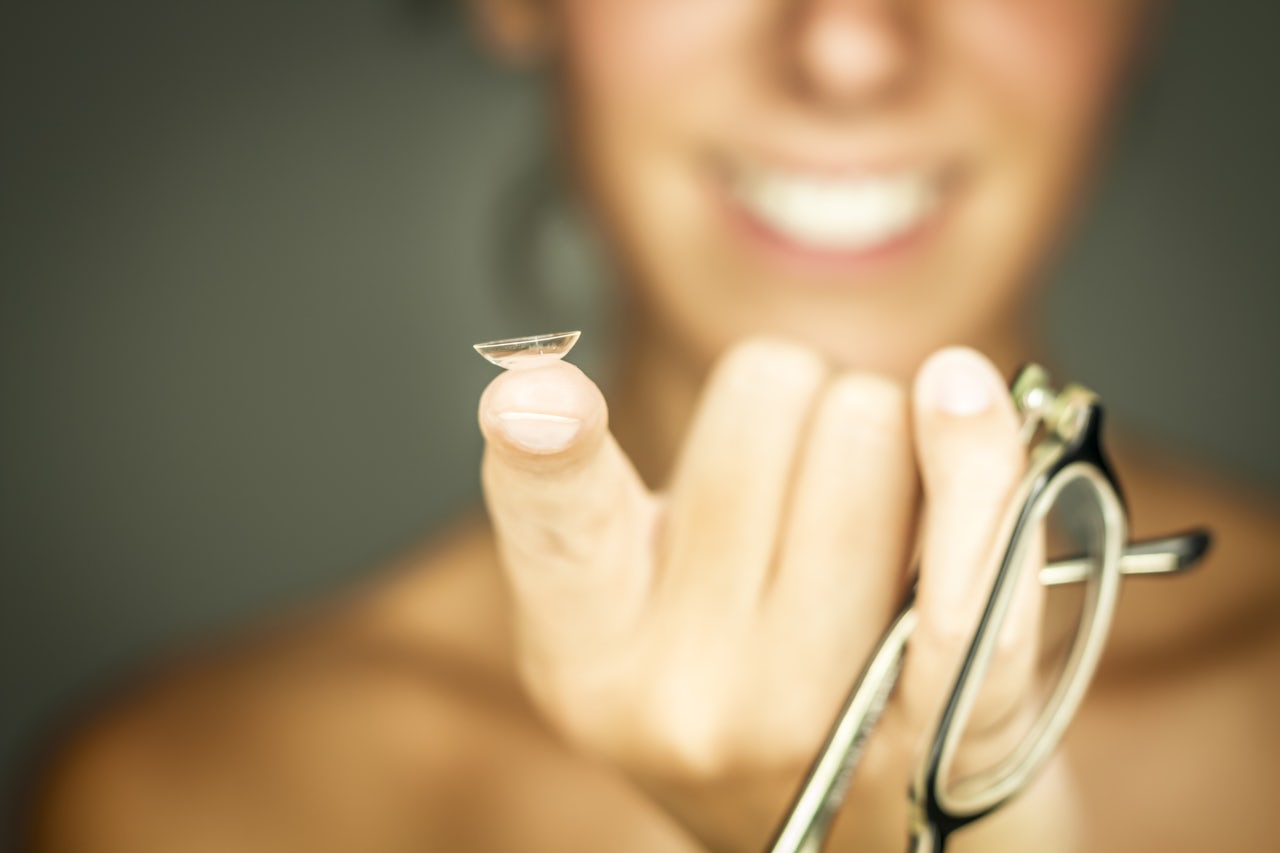Wearing contact lenses can be a pain: Bringing them on vacation, storing them properly in clean solution, and making sure hands are washed before putting them in. After a long day, it can feel easier to take them out in the shower or flush them down the toilet or sink while brushing your teeth than to actually put them in the trash.
But according to new research that will be presented today to the American Chemical Society, the bad habits of contact-lens wearers could be damaging the environment: lenses flushed down the drain enter our waterways and can break into microplastics that pollute the ocean and harm wildlife, and may even ultimately enter the food chain.
Surveying more than 400 contact-lens wearers in Arizona, researchers found that between 15 to 20 percent of them typically flushed their contact lenses down the sink or toilet. In the United States alone, there are roughly 45 million contact-lens wearers, and companies are increasingly marketing single-use contact lenses as the best option. That means up to 11 extra tons of plastic ending up in wastewater treatment plants in the United States per year as a result.
Microplastics come from a variety of sources, from beauty products with plastic bead exfoliants to larger plastic debris that breaks up into smaller and smaller pieces as it makes its way to the sea. A collection of larger plastic trash in the ocean, known as the ‘Great Pacific Garbage Patch’ is also contributing to the problem, as old toys, toothbrushes, and other kinds of trash slowly break down. (On the ocean floor, the fossil record is actually building up a new layer of plastic.)
But microplastics are not just a problem in the world’s oceans. Studies have also shown that the particles can end up in compost, soil and even the air. Fish or shellfish that we eat might consume up to 11,000 microplastics per year. They have also been found in sea salt (as much as 600 bits of microplastic per 2.2 pounds) as well as in chicken meat, honey, and beer.
Given the ubiquity of microplastics, the researchers said they were surprised to find that few studies looked at the afterlife of higher grade plastics, and in particular, contact lenses.
The researchers also conducted an experiment at a wastewater treatment plant using eleven different types of lenses, to see how much they would break down. They found that fragments of the lenses made it through the entire process.
“The fact that they persisted was really surprising,” Charles Rolsky, a PhD candidate in biology at the School of Life Sciences at Arizona State University, and one of the study’s lead authors told The Outline.
As part of a broader study of plastic pollution, Rolsky said he and his colleagues had chosen to focus on lenses as a “high value” plastic — unlike straws and plastic bags — which people might not be aware can also harm the environment. He said participants had been “very surprised” to realize the impact of flushing their lenses down the drain.
Another of the study’s authors, Rolf Halden, also a PhD candidate at the Center for Environmental Health Engineering at Arizona State University, said the idea actually came from personal experience. "I had worn glasses and contact lenses for most of my adult life," he said in a statement. “I started to wonder, has anyone done research on what happens to these plastic lenses?" He said it was a startling wake-up call when they couldn't find studies on what happens to contact lenses after use.
For single use contacts especially, it is not just the lenses themselves that pose an environmental concern — each lens comes in its own plastic blister pack. According to research from the contact lens company Bausch and Lomb, the waste generated annually from this packaging could circle the Earth three times over. The company runs a recycling program, in which customers can package and ship their contact lenses and packaging to be specially handled and processed.
While a more comprehensive survey is needed to understand the breadth of the problem, Rolsky said it was a good first step to understanding how plastics like contact lenses might also be a contributing factor when it comes to ocean pollution, and hoped that it might encourage lens manufacturers to include disposal instructions on their packaging.
“People don’t really have a connection to where something goes, once they have thrown it away,” he said, adding that he hoped studies like this could help to change people’s perception.
